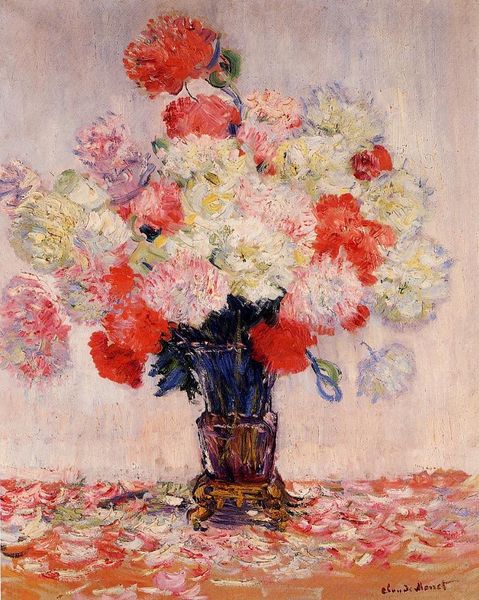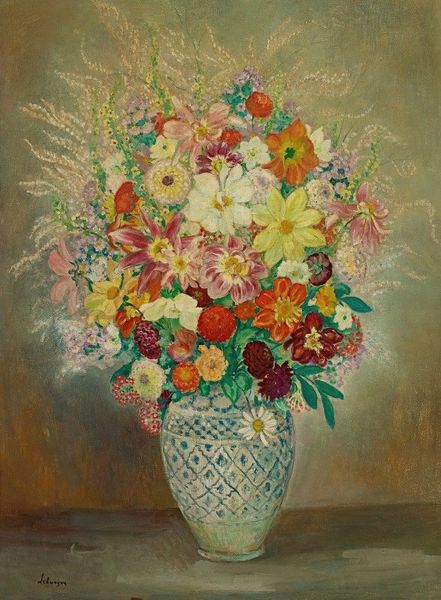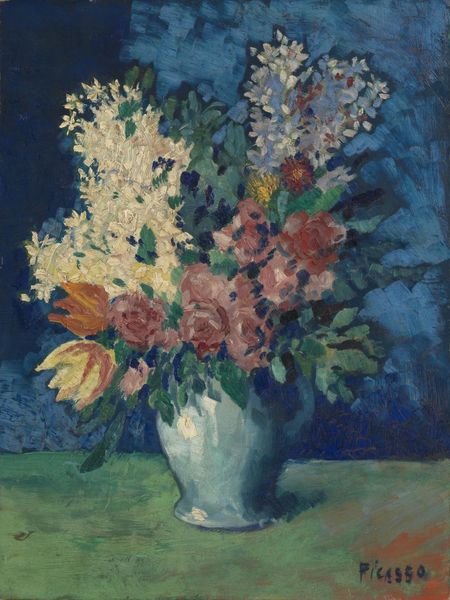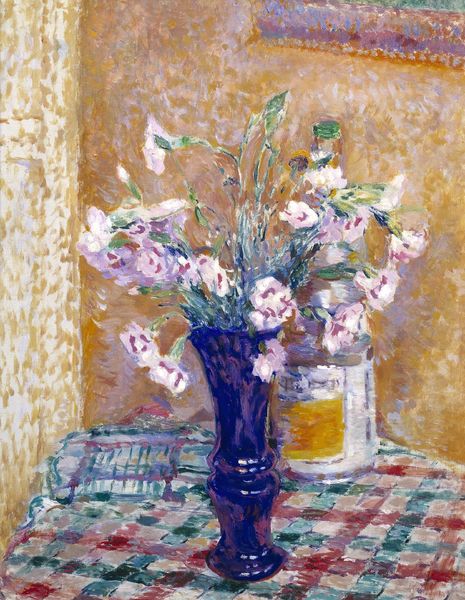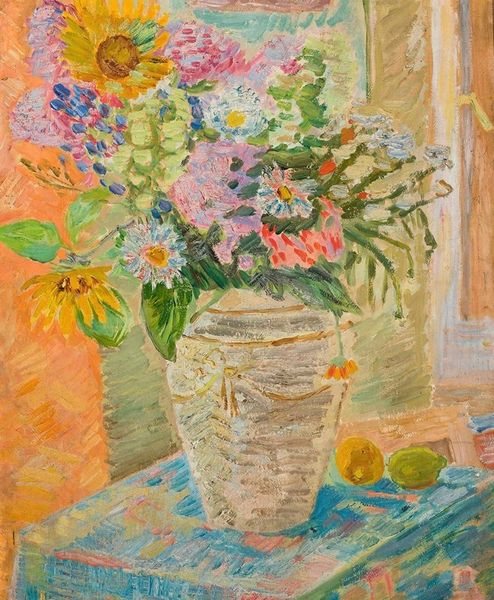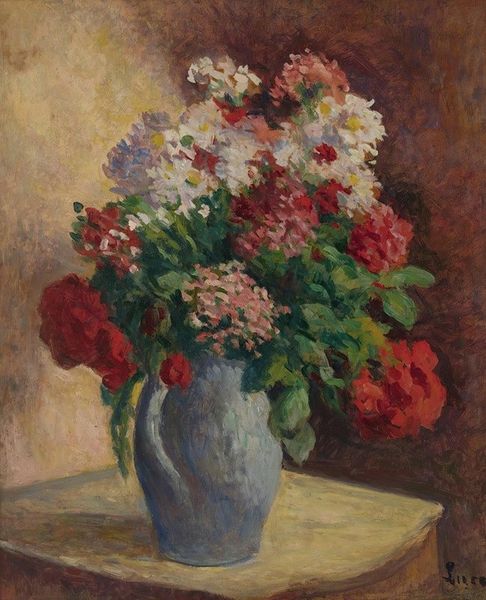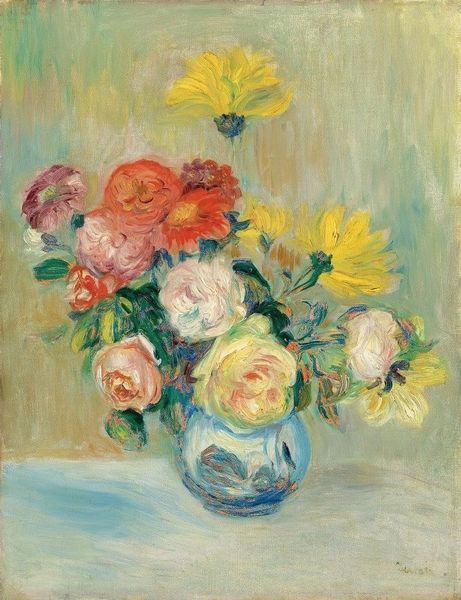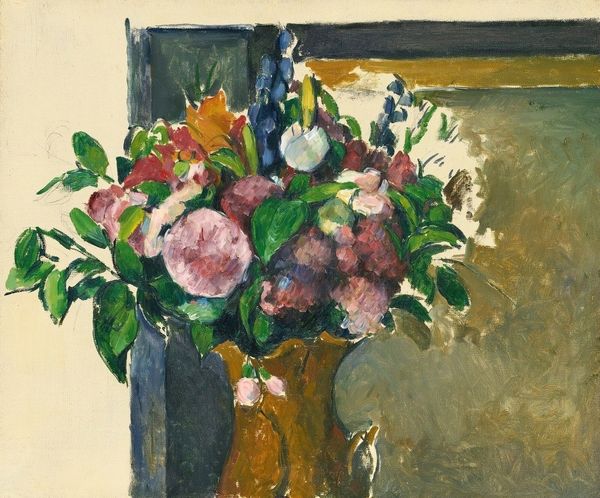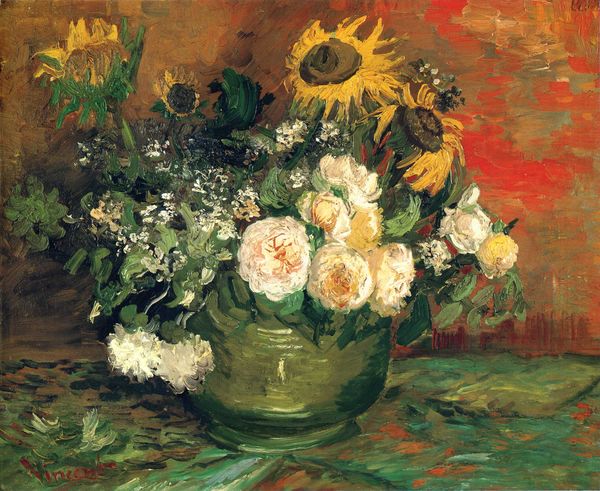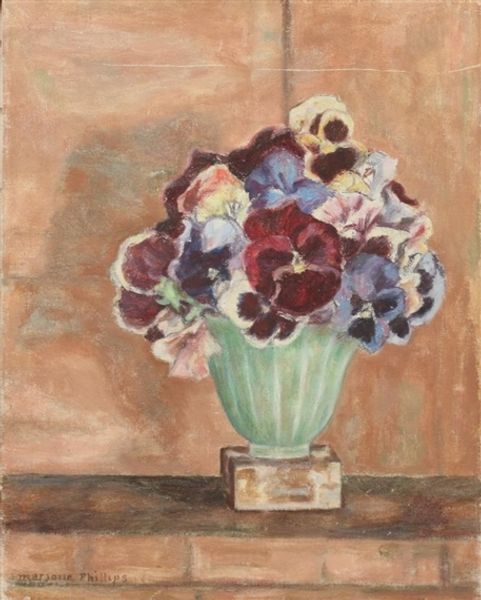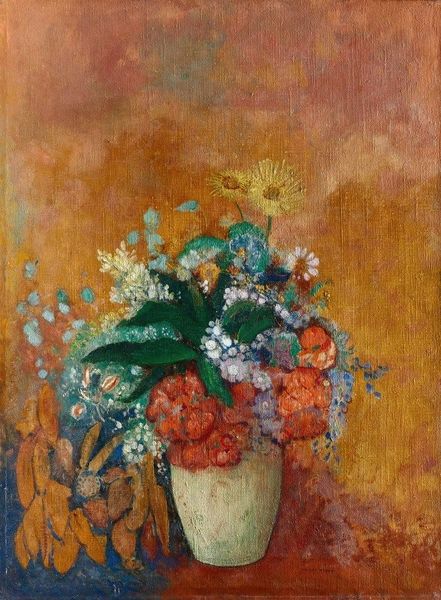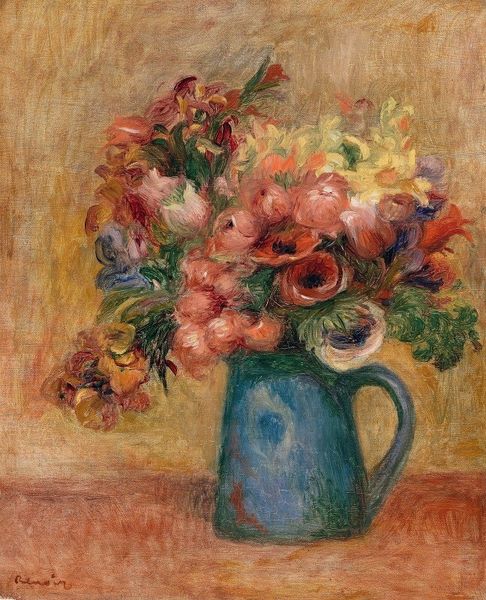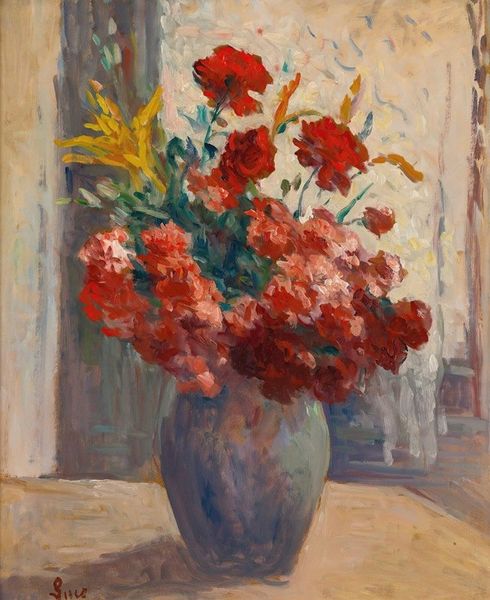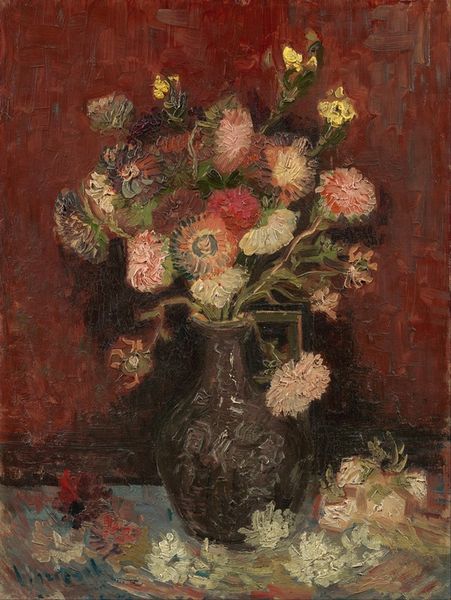
painting, oil-paint
#
portrait
#
water colours
#
painting
#
impressionism
#
oil-paint
#
oil painting
Copyright: Public Domain: Artvee
Curator: Here we have Pierre-Auguste Renoir’s “Still Life; Flowers,” painted in 1885. It exemplifies the lush textures and light effects of Impressionism. Editor: Oh, wow, the way those colors sort of blur into each other gives it such a dreamy quality. Like you could almost smell the flowers, even through the canvas. Curator: The loose brushstrokes and the rendering of light play a significant role. This piece fits into a larger art historical narrative concerning gendered spaces, right? Flower painting in the 19th century was often delegated as "feminine" art, acceptable for women artists and considered less serious. Renoir complicates this somewhat, as a celebrated male artist engaging with such themes. Editor: Right, it’s as if he’s challenging the idea that something beautiful and delicate can't be powerful or profound. You can practically feel the weight of the paint, it is almost sculpted onto the surface. Do you think there is a certain playfulness in using such a traditionally ‘feminine’ subject, knowing the expectations of the art world at the time? Curator: I think there is definitely a subversive reading available there, even if it isn’t overt. It’s also key to understand that floral still life offered Renoir a space to investigate color relationships, texture, and light in a controlled setting. He had complete autonomy over composition and lighting without the demands of, say, a portrait commission. He wasn’t constrained by needing to capture likeness or status. Editor: You’re totally right; the freedom seems to be almost tangible. I find it fascinating that within something so still, he manages to capture this constant dance of light and shadow. It feels very much alive. Curator: Indeed, the transience of life, beauty as something fragile and ephemeral – these themes are inherently tied to the tradition of flower painting. And within the context of late 19th century Paris, a time of enormous social and political change, such themes gain new layers of significance. Editor: Absolutely. I feel this urge to pick up a brush and just dive into the vibrant chaos. It’s funny how a painting from 1885 can make you want to create something right now. Curator: It's that enduring quality of art that speaks to us across time, revealing our shared humanity. Editor: True. This work manages to hold joy and a reflective somberness at the same time, like remembering a perfect day.
Comments
No comments
Be the first to comment and join the conversation on the ultimate creative platform.
